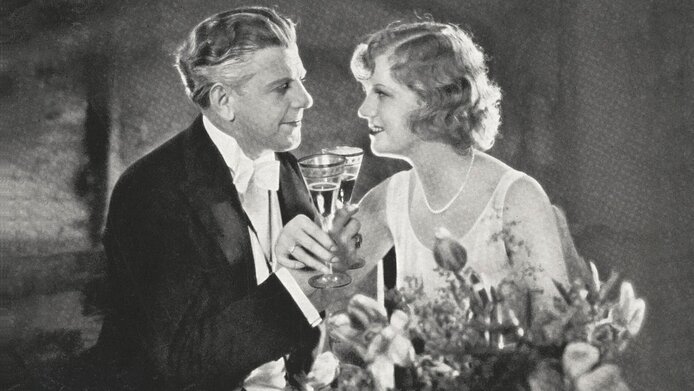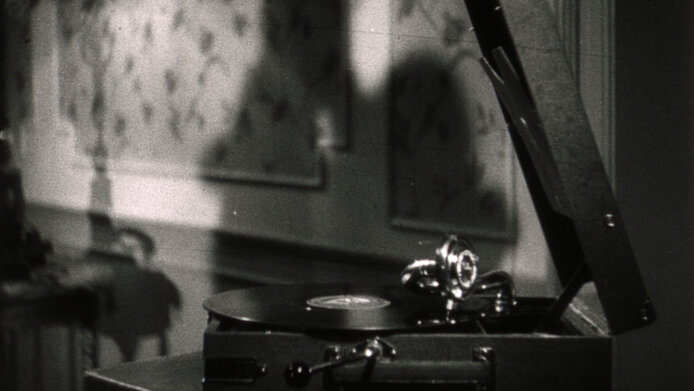How music fits into a screenplay

The first few minutes of the 1930 operetta film Zwei Herzen im ¾ Takt (Two hearts in ¾ time) feel like a wave of music that wells up in Franz Schubert's sanctum for composing in Vienna, and then gradually swells and surges to cover the entire city: we see butterflies dancing at the window to the waltz Schubert is playing at the piano, a boy whistling in tune below, a guitar player at the window opposite joining in, as do the violin of a street musician and the members of a military band seated on the sidewalk. Laundresses begin to dance, and finally, the camera fades into the scene of a wine tavern where musicians are playing the same waltz.
Film scholar Claus Tieber, who conducts research about music and film at the University of Vienna, considers scenes like these to be of particular interest. In his FWF-funded project “Screenplay writing and musical numbers” he investigated how musical numbers of this kind are incorporated in the screenplay. “Today, music hardly features in screenplays. For the most part these only contain visual scene descriptions and dialog. Occasionally there may be gaps left for musical numbers,” notes Tieber. “In early sound films, however, there were no hard-and-fast rules as to how authors should fit music into their scripts. In some cases, they still had a much greater influence on the design of musical numbers. “
One of the screenplay writers Tieber did research on in the project is Walter Reisch. Born in Vienna in 1903, Reisch was a prominent figure in early Viennese sound films. Being Jewish, he had to flee from the Nazis and emigrated to the USA in the mid-1930s. “Together with the actor and director Willi Forst, Reisch left his mark on Viennese film of the time, which showcased Vienna as a city of music. His work became a formative influence for the Austrian entertainment films of the 1950s, including movies such as Hallo Dienstmann and Sissi,” says Tieber. “Reisch was able to continue his career in Hollywood after having fled. There, too, he became famous for films where musical numbers get center stage.”
When Schubert gets entranced
The music for Zwei Herzen im ¾ Takt by director Géza von Bolváry was composed by Robert Stolz. The film is special also because it became the basis of a version for the stage that premiered a few years later with identical music. Reisch's screenplay also served as the basis for the theatrical version. The opening scene of the film version described above is reflected in the screenplay with a description of how the music develops that is very precise by today's standards: “Schubert plays in a mesmerized way, totally absorbed by the music – he picks up the tempo, and the music gets ever more jubilant and energetic”, says the screenplay. “When the motif of the waltz is repeated again, the improvised street orchestra kicks in at full strength – spinet, lute, drum, violin, vocals, whistles.” As one can see, the author even enumerates the instruments required.
The European entertainment films of the 1930s had a formative influence on the successful Hollywood movie musicals. Screenwriters used to incorporate musical numbers into their plots in great detail.
Reisch goes further still in the 1936 film Silhouetten, which was one of his last productions in Austria. The story about a ballet ensemble ends in a 15-minute dance number which features inter alia the Blue Danube Waltz and Vienna's Karlskirche. “For the Silhouetten closing number, Reisch simply included a detailed description in a four-page appendix, since it would have been too much to include in the screenplay. That's an approach you wouldn't find in Hollywood movie scripts of the time,” emphasizes Tieber. “Reisch was not a musician himself, but it is fascinating to see how precise his stipulations for the music are.”
Music as a structuring element
An analysis of Reisch’s screenplays quickly makes it clear how much he had already thought about the music while writing the script. “The musical part is not 'added on' to a scene afterwards, but is a central and structuring element of the author’s vision and an integral part of the film’s narrative,” notes Tieber. In many of the screenplays of that period, the importance of the music can already be seen in the formal features and the typography. “Screenwriters often used a two-column format: one column describes what is to be seen, the other what is to be heard,” explains Tieber. “The specifications are not always followed exactly, but the musical part is given a lot of importance from the outset.” At the same time, it is the music that determines what is seen on the screen in many of the “musical moments”. The music is translated into visuals in various ways, for example by image editing, camera positions or instilling a rhythm in the noises of everyday objects.
For Tieber, Reisch's work is a link that connects the Viennese tradition of operetta music with Hollywood musical films: “In tandem with colleagues such as the Berlin screenwriter Felix Jackson (born Felix Joachimson), who was also forced to flee, Reich represents a European influence on the enormously successful film musicals from Hollywood.” That today screenplays are a text form subject to strict standards is due not least to digitalization, as computer programs require screenwriters to comply with a concrete formal approach. Tieber considers it remarkable that the design of musical numbers is still exempt from this standardization. “Musical films continue to be successful today, as the example of the 2016 musical La la Land shows. The fact that no relevant screenplay rules have been established for this is astonishing,” says Tieber. “And yet it is precisely this non-narrative part, which includes the music, that is largely responsible for people wanting to view a movie they already know over and over again.”
Personal details
Claus Tieber is an assistant professor at the Department of Theater, Film and Media Studies at the University of Vienna and conducts research on the theory of screenwriting, narrative styles in Hollywood films and on the field of music and film. The project “Screenwriting and musical numbers”, running from 2018 to 2023, received EUR 358,000 in funding from the Austrian Science Fund FWF. In March 2024, the follow-up project "The impact of sound on the screenplay 1927–1934" was approved by the FWF.
Publications
Tieber, Claus: Narrating with Music: Screenwriting Musical Numbers, in: Davies, Rosamund; Russo, Paolo und Tieber, Claus (Hg.), The Palgrave Handbook of Screenwriting Studies. Cham: Palgrave Macmillan 2023
Tieber, Claus: Musik im Film, Musik für den Film: Analysefelder und Methoden, in: Hagener, M., Pantenburg, V. (Hg.) Handbuch Filmanalyse, Springer VS, Wiesbaden 2020
Tieber Claus, Wintersteller Christina: Writing with Music: Self-Reflexivity in the Screenplays of Walter Reisch, in: Arts 9 (1), 13, 2020






